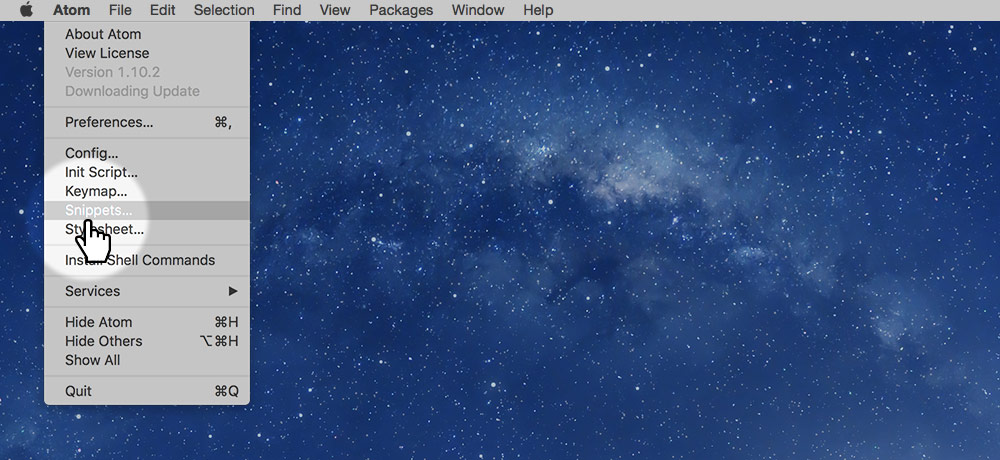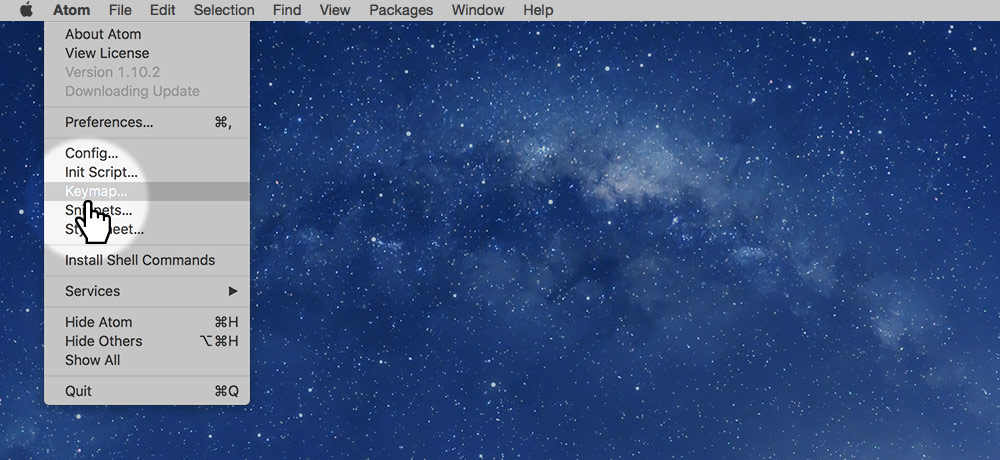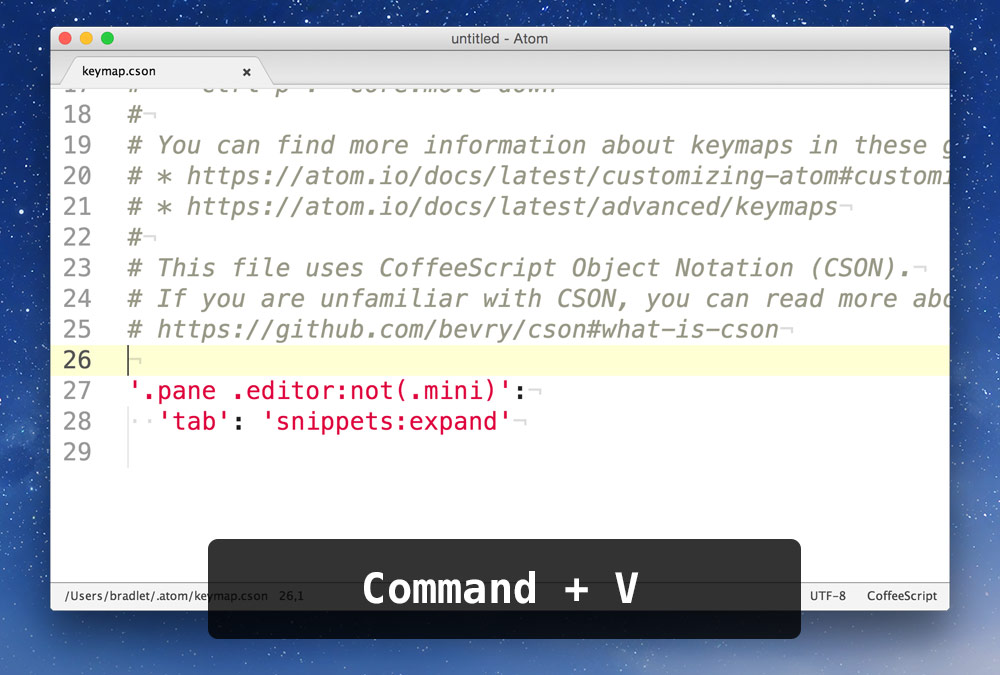Adding a few packages (aka plugins) to Atom will give you a bunch more convenient features.
Inside preferences to to the “Packages” tab to see all the ones already installed.
Go to the “Install” tab if you want to add new packages to your editor.
On the install screen you can search for packages and install them into Atom.

Packages to install
The names must match exactly!
autoprefixer — when run, adds the appropriate vendor prefixes to all CSSbrowser-refresh — pressing Fn+F5 will refresh the current HTML file in the browsercolor-picker — a pop-up color pickerpigments — displays the colours in the code behind the numbereditorconfig — for matching other designers’ coding standardsemmet — quick way to write HTML, using CSS selectorsadvanced-open-file — opens up a quick new file input at the bottom of the screen, ⌘⌥Ofile-icons — shows icons for each file type in the sidebarlinter — finds and points out bugs
try searching “linter base package” if it doesn’t show upminimap — adds an overview column of your code like Sublime Textopen-in-browser — pressing ⌘⌥M will pop open the HTML file in the browserauto-update-packages — to help keep your copy of Atom up-to-date







